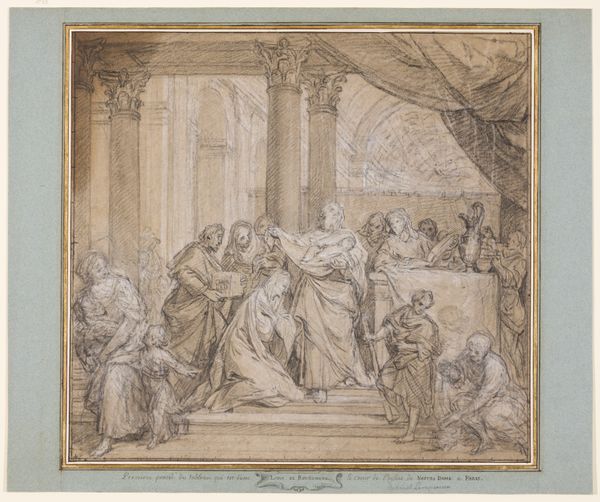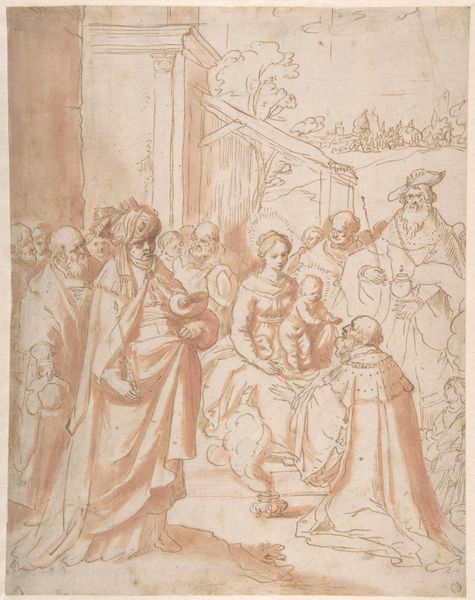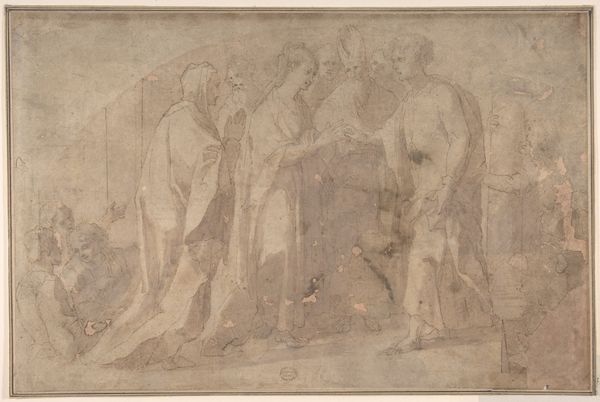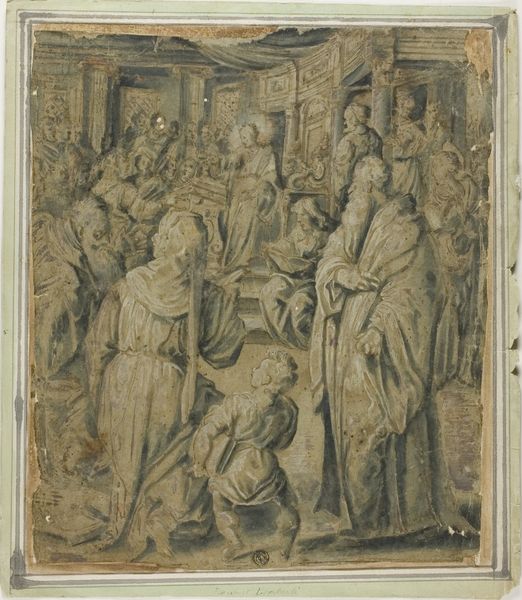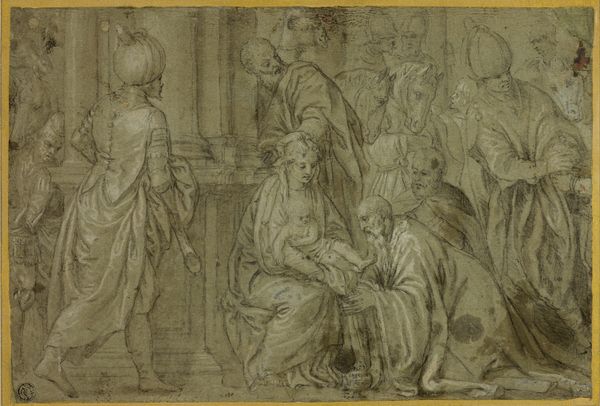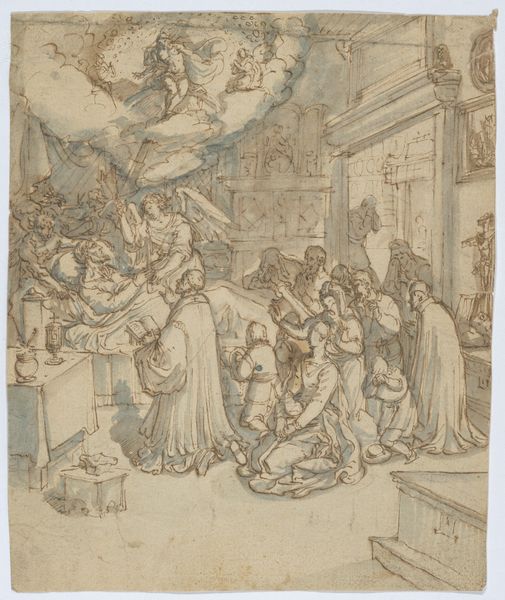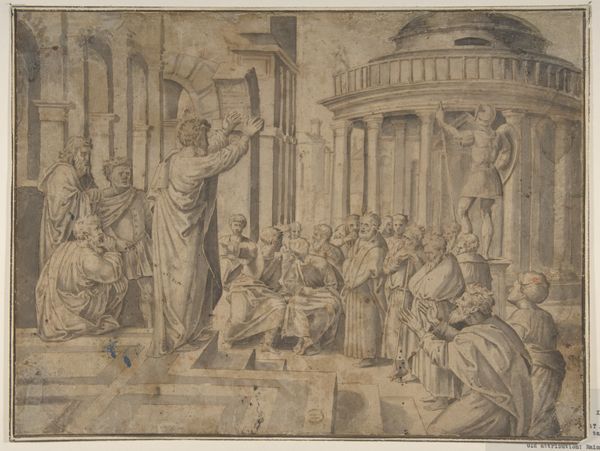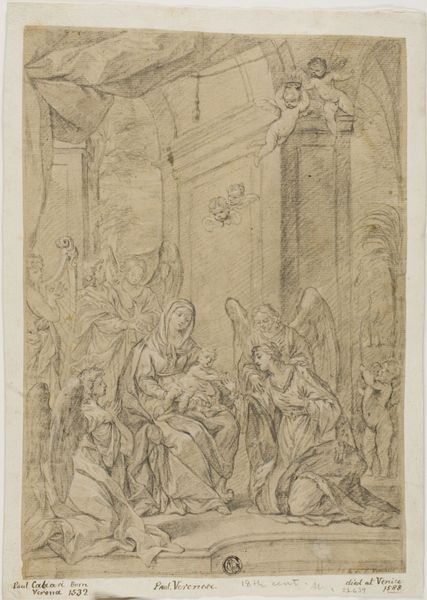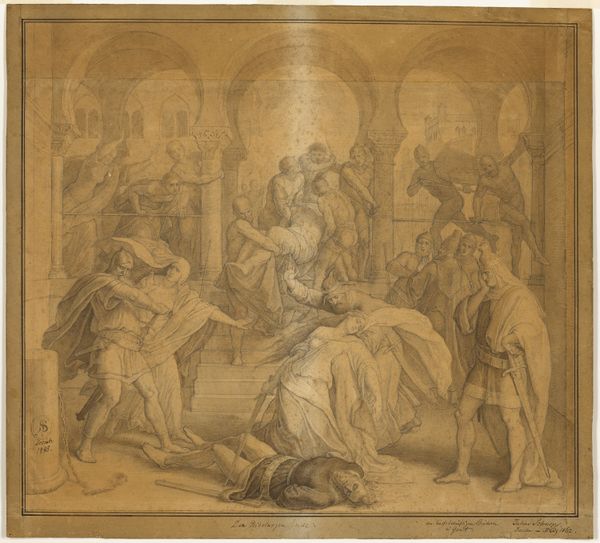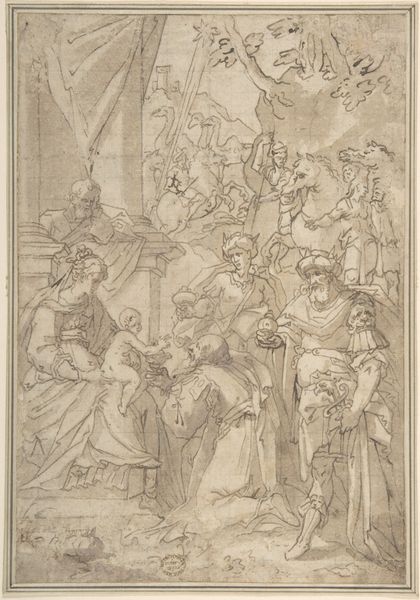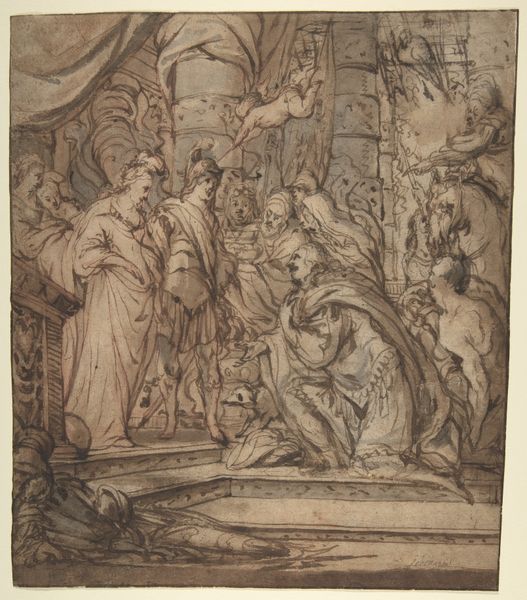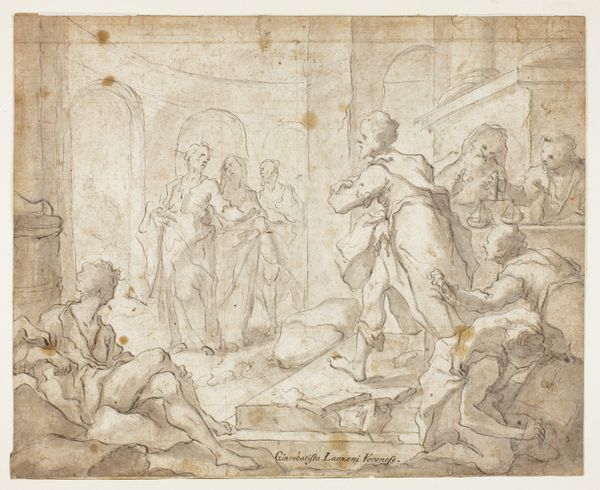
drawing, print, paper, pencil, chalk, charcoal
#
portrait
#
drawing
# print
#
pencil sketch
#
charcoal drawing
#
figuration
#
paper
#
pencil
#
chalk
#
charcoal
#
history-painting
#
italian-renaissance
#
italy
Dimensions: 274 × 283 mm
Copyright: Public Domain
Curator: Welcome, everyone. Here at The Art Institute of Chicago, we have Jacopo Pontormo’s “Christ before Pilate,” dating back to 1522-1523. It’s a drawing executed with pencil, charcoal, and chalk on paper. Editor: What immediately strikes me is the raw energy captured in this sketch-like piece. The dynamic, almost swirling composition, conveys a palpable sense of unrest and anxiety. Curator: Absolutely. Pontormo's rendition really encapsulates the tension of the biblical scene. Considering the context of the Reformation in the early 16th century, artists like Pontormo were navigating the changing religious landscape, reflecting a period of uncertainty and reinterpretation of traditional religious narratives. This scene depicts the moment Christ is presented to the people by Pilate. Think about the significance of justice, power, and the role of the masses in this narrative, especially given the historical unease. Editor: I'm drawn to how he uses light and shadow, especially how Pilate emerges from the sketch. The facelessness of the figures around Christ serves a purpose. There is no one with individuality—rather, they all belong to one ominous crowd. There's no depth; all focus remains on that tension, perfectly reflecting a historical reading in this moment. Curator: I agree. Pontormo was known for his innovative style. The spatial ambiguity and emotional intensity evident in the drawing speak to the evolving artistic sensibilities during the transition from the High Renaissance to Mannerism. Editor: To me, this goes beyond simple artistry. It almost encapsulates pure raw emotion. Curator: It reflects that complex social environment of Italy during this time, which shaped Pontormo’s visual representation. This work offers insight into how political turmoil and theological discourse shaped the Italian Renaissance artistic identity. Editor: This brief stop here definitely opens up a larger question on the complex emotions experienced across Renaissance Italy, doesn't it? Curator: It certainly makes one ponder not just the immediate artwork but the history intertwined with its creation.
Comments
No comments
Be the first to comment and join the conversation on the ultimate creative platform.
